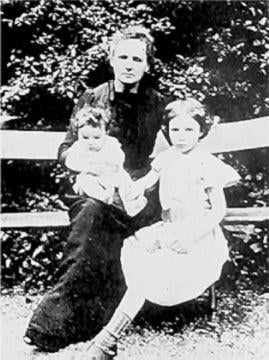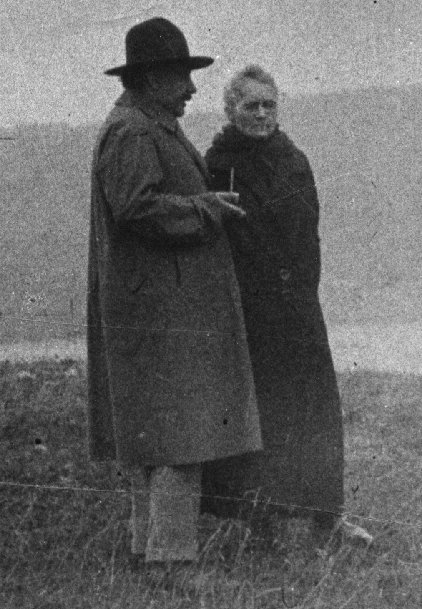
Marie Slodowska-Curie was born on the 7th of November 1867 in Warsaw, Poland. Only 15 years old when she finished her high school studies with first rank in her class, she went into teaching to set aside money for her sister Bronya Slodowska for her Medical school in Paris, along with her living expenses. After Bronya was done, she was to do the very same for her sister. She became a well paid governess for a wealthy agriculturist who ran a beet-sugar factory.She fell in love with their eldest son and her romantic interest with Karmierz Zorawski, the oldest son of the family was not appreciated.
But she stayed, discontinuing her affair and concentrating on self study taking interest sociological studies, physics and chemistry to find where academic interests lay. Her father was a physics teacher and she took advanced maths course with him though mail. She learnt chemistry from a chemist in the beet-sugar factory It soon became clear that she wanted to purse knowledge in maths and physical sciences.
"During these years of isolated work, trying little by little to find any real preference, I finally turned towards mathematics and physics, and resolutely undertook a serious preparation for future work "
In 1891, Marie finally set out for Paris and enrolled at Sorbonne. Her fear of being insufficiently prepared for university was very accurate. Her maths, science and french were not on the same level as her fellow students but she was more than determined to work hard to overcome those shortcomings. Her living arrangements being very basic, she used to wear every clothing she owned to keep herself warm during winter. She was awarded a scholarship to continue with her maths masters. Before completing her masters degree, she was commissioned by the society for the encouragement of National Industry to do a study, relating magnetic properties of different steels to their chemical composition. She had to find a lab space, this is when she meets Pierre Curie, who was a laboratory chief in Municipal school of industrial physics and chemistry in Paris.They married in July 1895.
Six months after their wedding, German physicist Wilhelm Roentgen discovered rays that could travel through solid wood or flesh (now known as X rays). Months after this discovery, French Physicist Henri Becquerel reported to the French Academy of science that Uranium compounds (when kept in the dark) would emit rays that would fog a photographic plate. Despite this interesting find, Uranium rays were ignored but it appealed to Marie. Allowed to use a crowded, damp storeroom as a lab, she used a clever technique using an electrometer which Pierre and his older brother Jaques had invented 15 years earlier. The device measures extremely low electrical currents. Marie used it to measure faint currents that can pass through air that has been bombarded with Uranium rays. Observations such as the electrical effects of Uranium rays are constant, regardless of the shape and form, wet or dry, exposed to light or heat. It showed that minerals with higher concentration of Uranium emitted the most intense rays. These observations led to Marie's simple yet revolutionary hypothesis; the emission of rays by Uranium compounds were an atomic property.
Marie tested all known elements to check if other elements displayed the same properties as observed in Uranium, where many chemists donated variety of samples. It was finally concluded that the emission appeared to be an atomic property. This particular behaviour of Uranium (and thorium) was named "radioactivity". Pierre joined her research as it had revealed that two Uranium ores, pitchblende and chalcolite were much more radioactive than pure Uranium itself. They concluded that this nature was due to one more additional, undiscovered, radioactive elements. It was a very difficult procedure to track down the new radioactive elements (Pitchblende is a compound consisting 30 different elements). By making repeated seperations and various separations of various elements in Pitchblende and using an electrometer to identify the most radioactive fractions, two new elements were discovered, Polonium (in the honour of Marie's country of birth) and Radium.
Not only was she a wonderful woman ahead of her time, but her life story must inspire young scientists (or any one for that matter) to work hard and be determined for your passion. From a governess in love to the mother of Modern physics. Her modesty, hardships and her life story must be taken as in inspiration. Be curious, or as Curie said - 'Life is not to be feared, only understood'.

 |
| Marie Curie was honored two Nobel prizes, one in 1903 and one in 1911. |


No comments:
Post a Comment